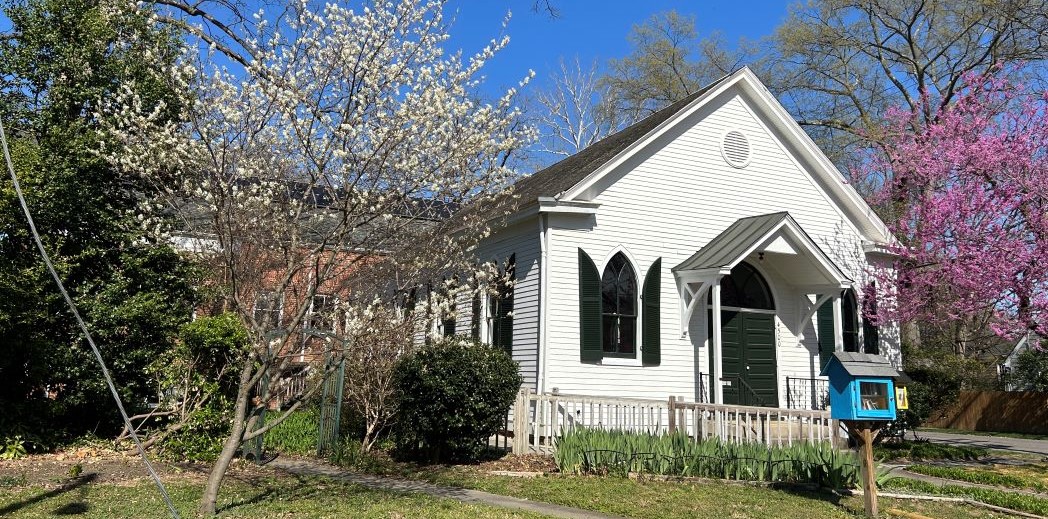Few people alive today know that the Powhatan hamlet of Fine Creek was a center of Quaker life in what was once part of Goochland County; then a part of Cumberland County with its formation in 1749; and finally a part of Powhatan County with that county’s formation in 1777. The Fine Creek area was first developed in 1735 by John Pleasants Sr., a member of a prominent and early Virginia Quaker family. He built a gristmill at Lees Landing Road (Rt. 641) and Huguenot Trail (Rt. 711) along the lower falls of Fine Creek. Within a decade a small rural hamlet emerged next to the gristmill with several stores, a cooper’s shop, a blacksmith shop, a small cheese factory, a postal station, and a ferry that provided access across the James River to the northern part of Goochland County. Eventually a one room schoolhouse was also built for the area’s children.
We know from the historical Quaker record that White Oak Swamp Monthly Meeting (aka. Henrico Monthly Meeting) allowed a “particular” (or subordinate) Quaker Meeting, Fine Creek Meeting, to be created in the area in 1746. At that time in Quaker history a new meeting would not have been allowed by the “monthly” (parent) meeting if there were not a good number of Quakers willing to support its ongoing existence. Quaker discipline was strict then and not the laisser-faire culture of liberal Quakerism today. Quakers were required to attend worship every “First Day” (Sunday) at the local meetinghouse if they were to remain Quakers. So, we know that a ready-made and active membership would have been available to provide ongoing support for the new meeting.
White Oak Swamp Monthly Meeting had a dozen or so Quaker meetings under its care during the eighteenth century. Fine Creek Meeting was just one of these, along with its “sister” meeting of Richmond Friends Meeting. Had Fine Creek meeting survived the ravages of history, today it would be 49 years older than Richmond Friends Meeting.
Powhatan County archives do indicate that Fine Creek Quakers were active abolitionists. James Pleasants of Fine Creek (brother of John Pleasants Sr. who was instrumental in developing the gristmill at Fine Creek) began emancipating his slaves around 1800 along with Fine Creek Quakers John Pleasants Jr. and Jonathan Pleasants, both sons of John Pleasants Sr. No doubt they were prompted to do so by a unanimous decision by all Virginia Quakers in 1800 to “disown” (the term then used to revoke Quaker membership) any Quaker who refused to emancipate their slaves. All Virginia Quakers had been asked to begin doing so since the mid 1770’s. County and historical records demonstrate a concerted effort by Fine Creek Quakers to systematically work towards this end. It wasn’t until 1804, however, that the county finally began providing newly freed blacks their certificates of freedom.
Fine Creek Meeting existed from 1746 until 1780 – some 34 years. Yet, there is much mystery surrounding the meeting. At that time in Quaker history, once a meeting was in existence for more than a few years, there was pressure as well as support to build a permanent meetinghouse. Also, Fine Creek meeting was nurtured by the Pleasants family – one of the wealthiest families in Virginia. So, the circumstantial evidence would suggest that a meetinghouse existed somewhere in the Fine Creek area of Powhatan.
Where exactly was the Fine Creek meetinghouse located? Was it in the hamlet surrounding the gristmill; or, was it in the surrounding countryside? Why was the Fine Creek Meeting “laid down” after existing for 34 years? One can only hope that as ancient records become more searchable due to digitization, someone will be able to fill in the missing pieces to this local Quaker mystery.
— Howard Brod, Midlothian Friends Meeting
